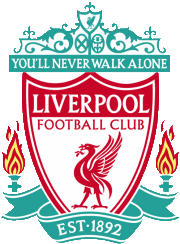
LIVERPOOL F.C.
Founded: 1892
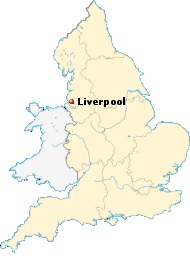
CLICK ON THE MAP TO
VIEW ENLARGED MAP
|
LIVERPOOL F.C. (Football Club)
Included Info: Brief History, Club/Stadium Info, Team Jersey & Much More...
BRIEF HISTORY of LIVERPOOL FOOTBALL CLUB
(reproduced from 'Wikipedia' pages)
Liverpool F.C. was founded following a dispute between the Everton committee and John Houlding, club president
and owner of the land at Anfield. After eight years at the stadium, Everton relocated to Goodison Park in 1892
and Houlding founded Liverpool F.C. to play at Anfield. Originally named "Everton F.C. and Athletic Grounds Ltd",
the club became Liverpool F.C. in March 1892 and gained official recognition three months later, after The
Football Association refused to recognise the club as Everton. The team won the Lancashire League in its début
season, and joined the Football League Second Division at the start of the 1893–94 season. After finishing in
first place the club was promoted to the First Division, which it won in 1901 and again in 1906. Liverpool
reached its first FA Cup Final in 1914, losing 1–0 to Burnley It won consecutive League championships in 1922
and 1923, but did not win another trophy until the 1946–47 season, when the club won the First Division.
Liverpool suffered its second Cup Final defeat in 1950, playing against Arsenal. The club was relegated to
the Second Division in the 1953–54 season. Soon after Liverpool lost 2–1 to non-league Worcester City in the
1958–59 FA Cup, Bill Shankly was appointed manager. Upon his arrival he released 24 players and converted a
boot storage room at Anfield into a room where the coaches could discuss strategy; here, Shankly and other
"Boot Room" members began reshaping the team.
The club was promoted back into the First Division in 1962 and won it in 1964, for the first time in 17 years.
In 1965, the club won its first FA Cup. In 1966, the club won the First Division but lost to Borussia Dortmund
in the European Cup Winners' Cup final. Liverpool won both the League and the UEFA Cup during the 1972–73 season,
and the FA Cup again a year later. Shankly retired soon afterwards and was replaced by his assistant, Bob Paisley.
In 1976, Paisley's second season as manager, the club won another League and UEFA Cup double. The following season,
the club retained the League title and won the European Cup for the first time, but it lost in the 1977 FA Cup
Final. Liverpool retained the European Cup in 1978 and regained the First Division title in 1979. During Paisley's
nine seasons as manager Liverpool won 21 trophies, including three European Cups, a UEFA Cup, six League titles
and three consecutive League Cups; the only domestic trophy he did not win was the FA Cup. Paisley retired in 1983
and was replaced by his assistant, Joe Fagan. Liverpool won the League, League Cup and European Cup in Fagan's first
season, becoming the first English side to win three trophies in a season. Liverpool reached the European Cup
final again in 1985, against Juventus at the Heysel Stadium. Before kick-off, Liverpool fans breached a fence which
separated the two groups of supporters, and charged the Juventus fans. The resulting weight of people caused a
retaining wall to collapse, killing 39 fans, mostly Italians. The incident became known as the Heysel Stadium
disaster. As a result of the tragedy, English clubs were banned from participating in European competition for five
years; Liverpool received a ten-year ban, which was later reduced to six years.
Fagan had announced his retirement just before the disaster and Kenny Dalglish was appointed as player-manager.
During his tenure, the club won another three League Championships and two FA Cups, including a League and Cup
"Double" in the 1985–86 season. Liverpool's success was overshadowed by the Hillsborough disaster: in an FA Cup
semi-final against Nottingham Forest on 15 April 1989, hundreds of Liverpool fans were crushed against perimeter
fencing. Ninety-four fans died that day; the 95th victim died in hospital from his injuries four days later and
the 96th died nearly four years later, without regaining consciousness.[19] After the Hillsborough disaster
there was a government review of stadium safety. The resulting Taylor Report paved the way for legislation that
required top-division teams to have all-seater stadiums. The report ruled that the main reason for the disaster
was overcrowding due to a failure of police control. Liverpool was involved in the closest finish to a league
season during the 1988–89 season. Liverpool finished equal with Arsenal on both points and goal difference, but
lost the title on total goals scored when Arsenal scored the final goal in the last minute of the season.
In 2001, Houllier's second full season in charge, Liverpool won a "Treble": the FA Cup, League Cup and UEFA Cup.
Houllier underwent major heart surgery during the 2001–02 season and Liverpool finished second in the League,
behind Arsenal. They won a further League Cup in 2003, but failed to mount a title challenge in the two seasons
that followed. Houllier was replaced by Rafael Benítez at the end of the 2003–04 season. Despite finishing fifth
in Benítez's first season, Liverpool won the 2004–05 UEFA Champions League, beating A.C. Milan 3–2 in a penalty
shootout after the match ended with a score of 3–3. The following season, Liverpool finished third in the Premier
League and won the 2006 FA Cup Final, beating West Ham United in a penalty shootout after the match finished on 3–3.
The club reached the 2007 UEFA Champions League Final against Milan, as it had in 2005, but this time Liverpool
lost 2–1. During the 2008–09 season Liverpool achieved 86 points, its highest Premier League points total, and
finished as runners up to Manchester United. In the 2009–10 season, Liverpool finished seventh in the Premier
League and failed to qualify for the Champions League. Benítez subsequently left by mutual consent and was
replaced by Fulham manager Roy Hodgson. At the start of the 2010–11 season Liverpool was on the verge of
bankruptcy and the club's creditors asked the High Court to allow the sale of the club, overruling the wishes
of Hicks and Gillett. John W. Henry, owner of the Boston Red Sox and of Fenway Sports Group, bid successfully
for the club and took ownership in October 2010. Poor results during the start of that season led to Hodgson
leaving the club by mutual consent and former player & manager Kenny Dalglish taking over. Despite a record 8th
League Cup success against Cardiff and an FA Cup final defeat to Chelsea, Liverpool finished in eighth position
in the 2011–12 season, the worst league finish in 18 years and led to the sacking of Dalglish. He was replaced
by Brendan Rodgers. In his first season, Liverpool finished in seventh. In the 2013–14 season, Liverpool mounted
an unexpected title charge to finish second behind champions Manchester City and subsequently return to the
Champions League, scoring 101 goals in the process, the most since the 106 scored in the 1895–96 season.
|
CLUB FACTS & INFORMATION
| Official Name
| --
| Liverpool F.C. |
| Club Nickname
| --
| The Reds |
| Year Founded
| --
| 1892 (125 years ago) |
| English County
| --
| Merseyside |
| Current Ground
| --
| Anfield |
| Ground Location
| --
| Liverpool, England |
| Club's Owner
| --
| Fenway Sports Group |
| Club Chairman
| --
| Tom Werner |
| Current Manager
| --
| Jürgen Klopp |
| Current League
| --
| Premier League |
| Last Season
| --
| Premier League, 4th place |
HOME COLORS

All Red |
AWAY COLORS

White w/Red Trim |
|
| |
INTERESTING STADIUM FACTS & INFORMATION

ANFIELD
Anfield Road, Liverpool,
Merseyside, L4-0TH, England
OPENED: ......... 1884
SURFACE: ........ Desso GrassMaster
COST: .............. not available
CAPACITY: ...... 54,074
RECORD: ......... 61,905 (1952 vs Wolverhampton)
OWNER: ........... Liverpool F.C.
OPERATOR: ..... Liverpool F.C.
FIELD SIZE: ..... 110 x 74 yards (101 x 68 meters)
|
|
|
HOME JERSEY
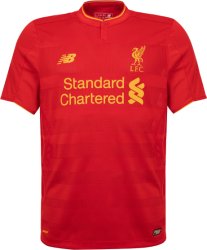 |
AWAY JERSEY
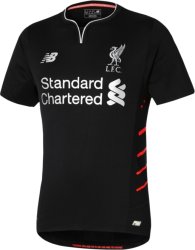 |
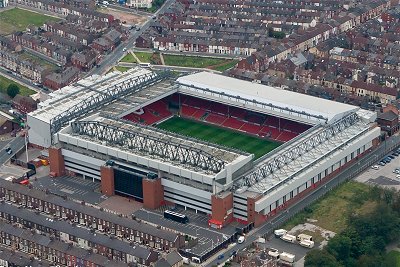
Click On Aerial Photo To View/Download Enlarged Image
|
Anfield (Liverpool) Seating Diagram
Click On Diagram Below To Enlarge View
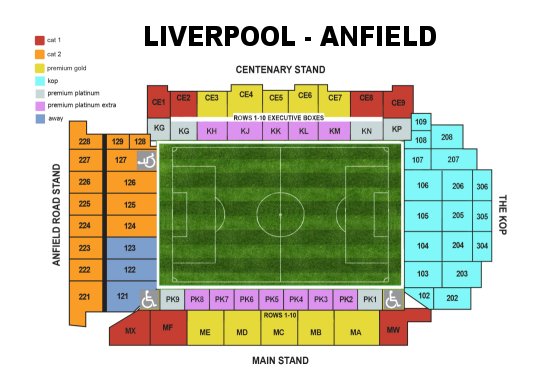
|



LIVERPOOL STADIUM WALLPAPERS (Free Download)
Wallpaper Size below is 800x600: To Download Bigger Sizes, Click On Any Button Shown Above
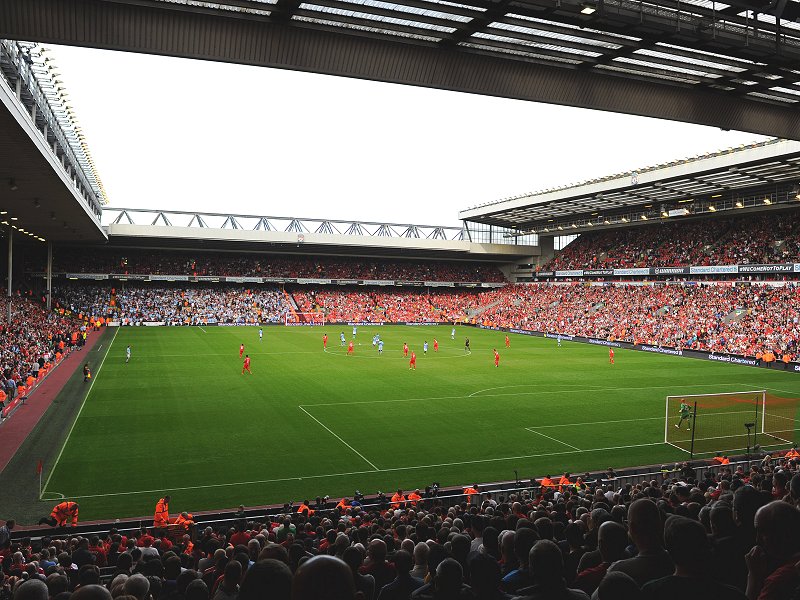
|
|

